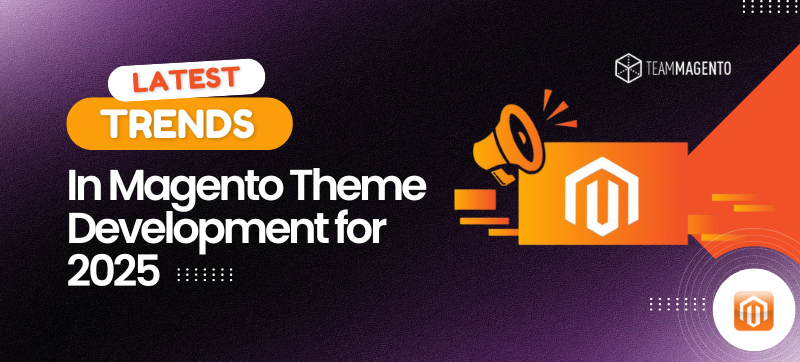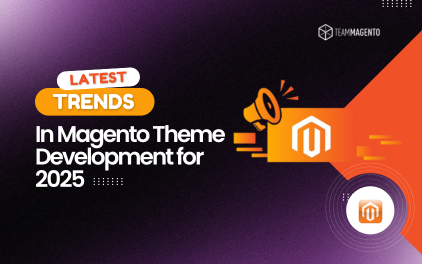
1. Introduction to Magento Theme Development Trends
In the ever-evolving world of eCommerce, Magento has solidified its reputation as a leading platform for online stores. As we steeped into 2025, the need for stunning, functional, and user-friendly themes has never been more critical. The landscape of Magento theme development is shifting, and we’re here to explore the latest trends that are setting the stage for a better shopping experience.
The Evolution of Magento Themes
Gone are the days of cookie-cutter templates and one-size-fits-all designs. Magento themes have undergone a significant transformation, evolving from basic structures to highly sophisticated, visually appealing interfaces. Developers today are embracing creativity and innovation, pushing boundaries to create themes that not only look good but also deliver exceptional performance. With the introduction of modular architectures and advanced design frameworks, Magento themes are now more customizable than ever, ensuring that every store can have a unique flair.
Key Drivers of Change in Theme Development
Several factors are propelling the current wave of change in Magento theme development. The increasing demand for tailored shopping experiences, advancements in technology, and the growing focus on mobile commerce are all stirring the pot. Additionally, consumers are becoming more tech-savvy, expecting seamless and interactive website experiences. This has led developers to prioritize functionality, responsiveness, and aesthetic appeal when creating themes, ensuring that they stay ahead of the curve.
2. Enhanced User Experience Through Advanced Customization
As eCommerce continues to grow, the emphasis on user experience is paramount. Magento themes are now designed not just to attract attention but to captivate users and keep them coming back for more.
Personalization and User-Centric Design
Personalization has become the holy grail of online shopping. In 2025, Magento themes are focusing heavily on user-centric design, incorporating elements that cater to individual preferences. From customized product recommendations to tailored landing pages, the aim is to create a shopping experience as unique as the users themselves. A touch of personalization can enhance customer engagement and lead to increased sales — because who doesn’t love a little extra attention?
Dynamic Content and Layout Adaptation
Static sites are so last season! Modern Magento themes are incorporating dynamic content and layout adaptations that respond to real-time data and user behavior. This means that the layout, images, and even products displayed can shift based on user interactions and preferences. It’s like having a chameleon for a website — always changing to fit the mood!
3. The Rise of Mobile-First Design in Magento Themes
With mobile shopping on the rise, it’s no surprise that mobile-first design has become a major trend in Magento theme development.
Importance of Responsive Design
In 2025, having a responsive design isn’t just a nice-to-have; it’s a must-have! Google has confirmed that mobile-friendly sites rank better in search results, so ensuring your Magento theme is fully responsive is crucial. A seamless mobile experience can mean the difference between a sale and a “better luck next time.” Plus, who doesn’t enjoy a theme that looks great whether you’re on your phone during a lunch break or lounging on your couch with a tablet?
Tips for Creating Mobile-Optimized Themes
To stay ahead of the game, focus on key elements for mobile optimization: prioritize fast loading times, use larger buttons for easy navigation, and minimize text to keep things tidy. Don’t forget to test your designs on various devices and screen sizes; being responsive means your theme should behave like a skilled acrobat — graceful and agile no matter the stage!
4. Integration of Artificial Intelligence in Theme Functionality
As we march into an AI-driven future, it’s no surprise that integrating artificial intelligence into Magento themes is becoming a hot topic.
AI-Powered Personalization Features
AI is the magic wand that can transform your Magento store into a shopping wonderland! AI-powered personalization features can analyze user data, predict behavior, and suggest products that users didn’t even know they wanted. This not only enhances the shopping experience but also creates a more seamless and engaging environment, making customers feel understood and valued.
Chatbots and Customer Support Integration
Gone are the days of waiting on hold and endless FAQ searches! The rise of chatbots integrated into Magento themes is changing the customer support landscape. These virtual assistants are available 24/7, ready to answer questions, provide product suggestions, and assist with checkout. Imagine a virtual shopping assistant who never gets tired—now that’s a trend we can get behind!
In 2025, Magento theme development is all about creating experiences that are as engaging as they are efficient. By embracing these trends, developers can ensure they are not only meeting customer expectations but exceeding them. Happy theming!
5. Emphasis on Speed and Performance Optimization
In 2025, the mantra for Magento theme development is “faster is better.” With consumers becoming increasingly impatient—seriously, if a webpage takes longer than a hot second to load, they might as well set their phone down and forget what they were looking for — developers are doubling down on speed and performance optimization.
Best Practices for Fast Loading Times
To keep shoppers engaged and, you know, not sprinting for the back button, focus on lightweight themes. Opt for minimalistic designs that avoid bloatware. Prioritize image optimization and leverage formats like WebP to reduce load times. Implement lazy loading for images and videos, so they only load when they’re in the viewport, not before. And don’t forget about caching strategies; they’re basically your best friends in speeding up load times.
Tools and Techniques for Performance Testing
Alright, let’s talk shop. There are some stellar tools out there to help you measure and optimize performance. Google PageSpeed Insights is a classic, giving you a breakdown of what’s working and what’s not. GTmetrix is another excellent option, providing a detailed performance report and actionable recommendations. And if you want to get real fancy, consider using WebPageTest, which can simulate loading on different devices and browsers. Performance testing isn’t just a box to check; it’s your golden ticket to happy customers and higher conversions.
6. The Impact of Headless Commerce on Magento Themes
Headless commerce is shaking things up in the e-commerce world. In 2025, more and more Magento developers are embracing this approach, and for good reason.
Understanding Headless Architecture
In simple terms, headless commerce decouples the frontend and backend of your website, which means more flexibility when it comes to user experience. You can update your frontend independently of your backend, giving developers creative freedom to experiment without waiting for backend updates. It’s like dressing up for a party while your friend is still figuring out what to wear!
Benefits of Decoupled Frontend and Backend
This decoupling means faster and more responsive designs, allowing businesses to adapt quickly to market changes or tech updates. Plus, it opens the door to integrating new technologies and customer touchpoints without the hassle of overhauling your entire system. Think single-page applications, progressive web apps, and even voice commerce. In this rapidly evolving digital landscape, those who adopt headless commerce will be ahead of the curve.
Conclusion: Preparing for the Future of Magento Theme Development
In conclusion, staying ahead of the latest trends in Magento theme development is essential for businesses looking to thrive in the competitive eCommerce landscape of 2025 and beyond. By embracing advanced customization, prioritizing mobile-first design, and integrating innovative technologies like artificial intelligence and headless commerce, merchants can create engaging and efficient shopping experiences for their customers. As the industry continues to evolve, adopting sustainable practices and optimizing performance will also be key to long-term success. By keeping these trends in mind, developers and businesses can position themselves for growth and success in the dynamic world of online retail.
Frequently Asked Questions (FAQ)
1. What is headless commerce, and how does it affect Magento theme development?
Headless commerce refers to the decoupling of the frontend and backend of an eCommerce platform, allowing for greater flexibility in design and functionality. In Magento theme development, this approach enables developers to create highly customizable and responsive themes that can seamlessly integrate with various front-end frameworks and technologies.
2. How can I optimize my Magento theme for better performance?
To optimize your Magento theme for performance, consider implementing best practices such as minimizing HTTP requests, using image compression, leveraging browser caching, and employing Content Delivery Networks (CDNs). Additionally, regularly testing your site’s speed and utilizing performance optimization tools can help identify and resolve bottlenecks.
3. What role does artificial intelligence play in Magento theme development?
Artificial intelligence can enhance Magento theme development by enabling personalized shopping experiences, improving customer support through chatbots, and analyzing user behavior to provide tailored product recommendations. These AI-driven features help create a more engaging and intuitive user experience.
4. Why is mobile-first design important for Magento themes?
With the increasing number of consumers shopping on mobile devices, mobile-first design is crucial for Magento themes. This approach prioritizes responsive design, ensuring that websites function effectively on various screen sizes and providing a seamless experience for users, which can lead to higher conversion rates and customer satisfaction.


